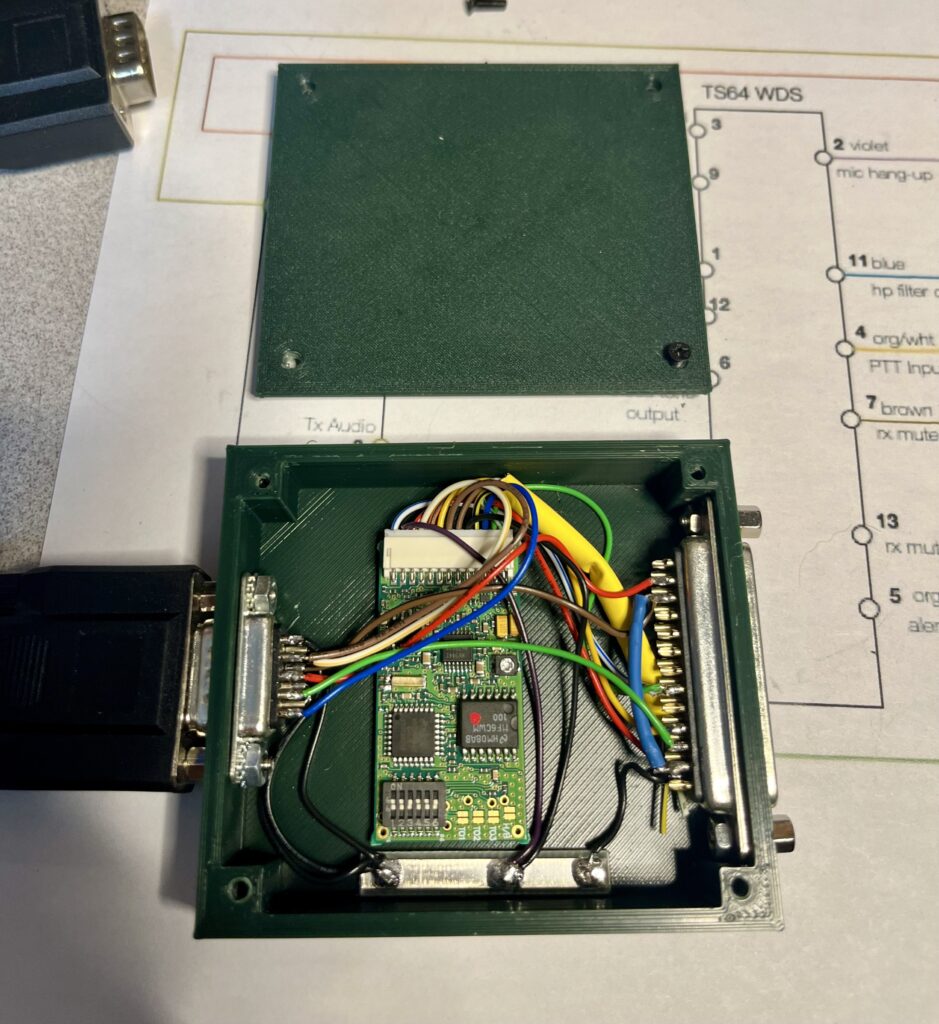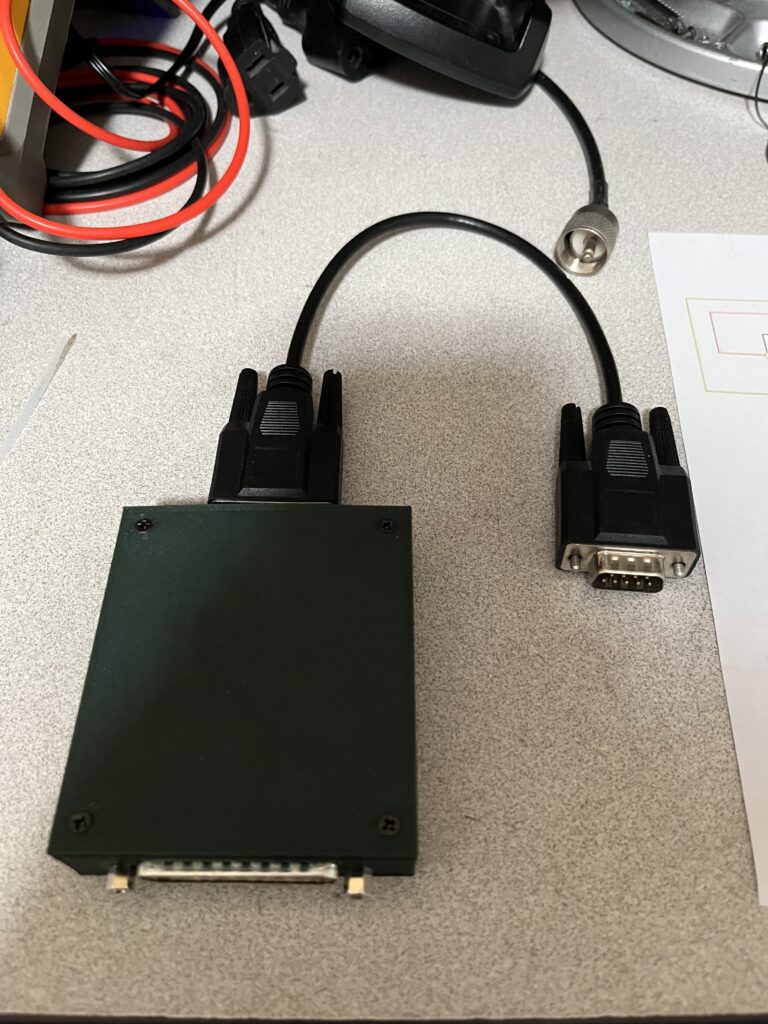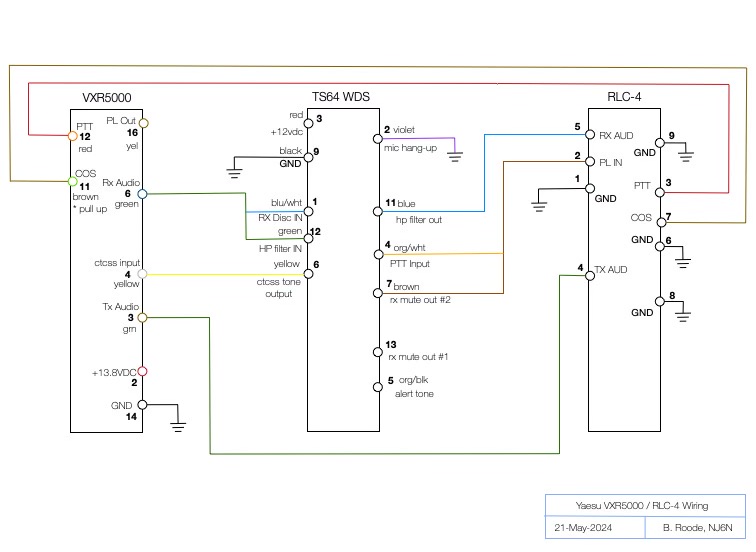A few years ago, I upgraded SOARAs primary VHF repeater at our Temple Hill site to a “new to us” Yaesu/Vertex VXR-5000R repeater. The new VXR-5000V repeater features an internal CTCSS decoder and encoder and a basic repeater controller.
Around the same time, I replaced the half-duplex GM-380 link radio with a pair of Motorola CDM-750’s to connect to the full-duplex radios that Joe, WB6HRO had graciously installed for us at Santiago.
During testing, I noticed the same problem that we have seen before. Certain radios could not be heard through the link from Temple to Santiago. Using a service monitor on the output of the link radio, I noticed that the PL tone on certain radios replaced the proper link PL that’s generated in the CDM-750 transmitter. I believe the PL encoder audio levels on these radios are higher than other radios and thus make it through the filters and out to the link transmitter.
The RLC controllers do have a high pass filter on receive audio, but it does not seem to filter the PL tone received from certain radios. It allows the tone to pass through the audio bus and out the link port to the CDM 750 transmitter. Without the correct PL tone on the link transmitter, the remote receiver would not allow the audio to pass through to the controller audio bus.
At our Temple Hill repeater site, we employ an Audio Test Solutions (previously Link Communications) RLC-Club Deluxe II 6-port repeater controller. This controller enables us to link our svxLink (EchoLink) and full duplex Santiago Repeater Link (Motorola CDM-750s) ports to the VHF or other repeaters as necessary.
Another problem that we have is during wet weather. There is a translator at the repeater site that translates 88.5 FM to 89.1, a difference of 600KHz. During wet weather, the output of Temple Hill VHF (147.645- with PL 110.9) mixes with the 600KHz and makes its way back into the receiver. Because it has qualifying PL, the transmitter is keyed over and over and includes audio from the KSBR 88.5 radio station. This is not pleasant to listen to!
In our previous FTR-2410A repeater, we had to add a ComSpec PL encoder and decoder. We configured the ComSpec board such that the output PL tone would only be present in the transmitted audio when an active user’s qualifying PL was present in the receive audio. The Rx PL (Rx Mute Output) logic signal was used to drive the encoders enable line (PTT Input).
The primary reason for doing this is to allow us to remotely interface EchoLink to the site, should the on-site Internet fail. EchoLink requires that there are no courtesy tones, IDs, or announcements sent through the system. This also prevents a Ping-Pong effect between the EchoLink node and the repeater when there is a courtesy tone present. Another benefit was to provide users with ability to filter out the courtesy tone, IDs and announcements. With PL “decode” enabled, users only heard other users.
With the built-in PL encode/decode feature of the repeater, we cannot configure this feature.
The solution to both problems, certain radios not being able to be heard through the link, and the mixing with the KSBR translator and re-keying during wet weather is to add an external device that provides a high-pass filter and handles the PL logic we need. The high-pass filter will prevent the user PL tone from making its way to the link transmitter, and the external PL logic will prevent PL tone from being transmitted when there is not an active user using the repeater.
Towards this end, I fabricated an interface that will be installed between the repeater radio and the RLC controller. Here is a block diagram/schematic and the device I have fabricated using a ComSpec TS-64WDS board.



Communications Specialists (ComSpec) no longer makes the tone signaling boards we use in our repeaters. In this case, the internal controller will not do what we need, so having squirreled away some spare ComSpec boards worked out well for us.

Leave a Reply